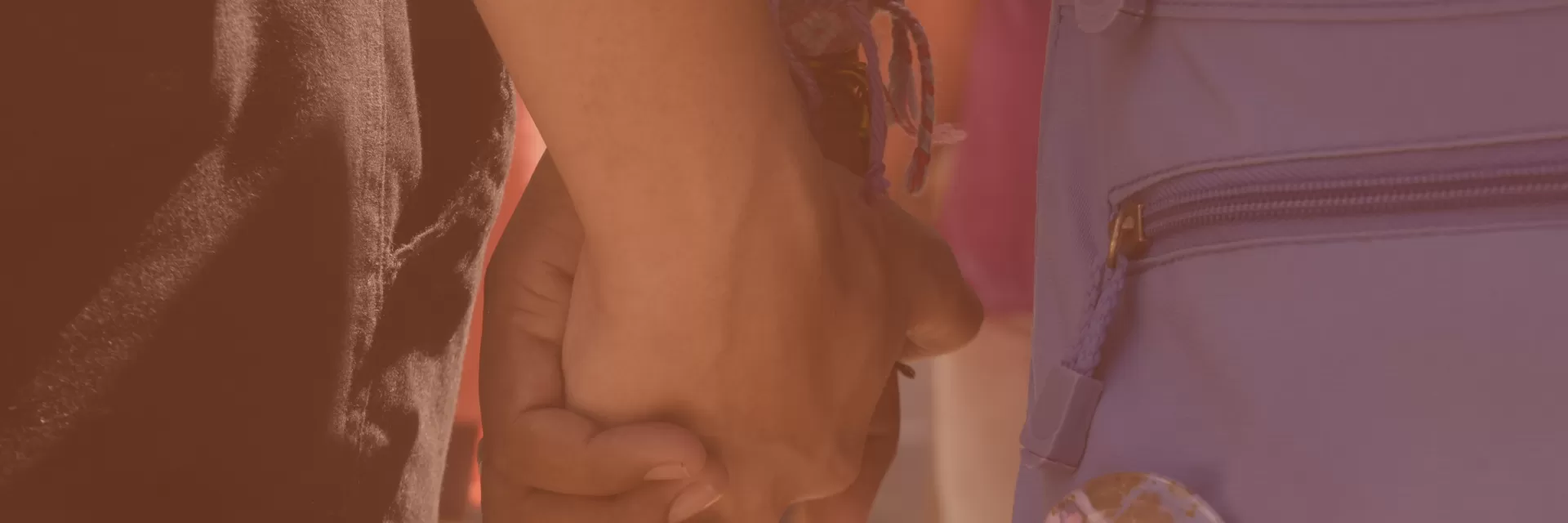
It’s complicated, to say the least.
Our new President claims that a “bunch of radical lunatics” run USAID. His preposterously wealthy sidekick calls it a criminal organization and said it was “time for it to die.”(i) They have not presented evidence.
In other words, it’s theatrics. It would be entertaining, except that the funding halt means loss of livelihoods for thousands of USAID employees and contractors, and a sudden end, without any kind of warning or wind-down process, to USAID-sponsored programs that the world’s most vulnerable people depend on.
The new Secretary of State says USAID must serve US foreign policy. However, USAID has always been an extension of US policy, and some of us on the left have been critiquing this for years.
How USAID Serves US Policy Interests
Food for Peace, USAID’s flagship program, takes surplus US agricultural products and provides them to the United Nations’ World Food Program, which then contracts with other NGOs, for distribution overseas. From 2013-2022, the World Food Program was the second largest recipient of humanitarian USAID funding.(ii) In recent years they are the top recipient. “In 2022, the U.S. provided nearly 4 billion pounds of American-grown food to 58 million people through the Food for Peace Program, and much of it was received and distributed by the U.N. World Food Program.”(iii) Sometimes contractors distribute the food directly, like in emergencies, but often aid workers must sell US agricultural products on local markets, and the income is used to fund local aid workers. Because the US subsidizes our farmers, the cost of our agricultural products is lower than what local farmers can grow themselves. So Food for Peace floods local markets with products from the US, competing with local or regional farmers who cannot match the low prices.
Aid workers operating in-country understand this problem, and have successfully lobbied to use more cash and fewer in-kind contributions for food assistance. However, the practice persists, in large part because of the lobbying efforts of large shipping companies, who would lose business if the practice ended.
In other words, our flagship food aid program is less about alleviating poverty and more about supporting US farmers and shipping companies.
There are other examples. Leaders of Russia and Hungary are reportedly cheering the decision to shut down USAID. “Putin’s war with America started when he expelled USAID from Russia in 2012, saying its support for civil society was a part of a State Department/CIA plot to overthrow him.”(iv) This work was an extension of US foreign policy toward countries we hoped to influence after the demise of the Soviet Union. USAID also has a checkered history of operating as a front for the CIA.(v) USAID programming also served as a counterbalance to China’s ambitions to expand its global political and economic dominance.(vi)
The largest recipient of USAID funding in 2023, the last year where figures are available, was Ukraine. Of the $72 billion total disbursed, $16 billion went to Ukraine.(vii) To state the obvious, USAID assistance to Ukraine serves US policy objectives because it strengthens Ukraine to improve its efforts to win the war with Russia.
The stated reason for shutting down USAID is nonsense. Quixote Center can make a better argument, based on the effectiveness of USAID's humanitarian mission, for reforming the policies and practices of USAID.
How effective is the humanitarian mission?
The United States provides about 42% of all humanitarian aid globally. Of the $72 billion total USAID budget in 2023, about $43 billion was considered humanitarian aid.(viii)
It is hard to overstate the importance of PEPFAR, the George W. Bush program credited with saving the lives of 25 million people infected with HIV/AIDs, and preventing the disease’s spread. Notably, the State Department already administers PEPFAR, and USAID is an implementer.(ix) Other oft-cited successful global health initiatives are the distribution of bednets to prevent transmission of mosquito-borne illness, and the fight against Ebola in Africa. The bednet initiative is credited with saving millions of lives and preventing infection for hundreds of millions more. (Note that because the USAID website is down, we cannot provide exact figures.)
Emergency assistance is another example. The advantage of using large international NGOs, which contract with USAID, is that they can preposition supplies in emergency-prone areas and mobilize quickly. When the hurricane hits, impacted populations can get quick access to food, cash transfers, tarps, and hygiene kits. Although the websites are down, a Google search indicates that USAID spent about $1 billion for emergencies in 2023.
This is lifesaving work, but there is another way of looking at it. When disaster strikes the United States, other countries contribute, such as Mexico and Canada sending firefighters, but our own state and national governments lead recovery, together with local NGOs and volunteers, using our tax dollars. We have an economy with a tax base and can prepare and pay for emergencies, and health care for our own citizens. All countries should be in the same situation. The real question is whether USAID funds have brought countries out of poverty and turned them into countries that can become independent of outside assistance, and artisans of their own destiny.
What Successful Aid Looks Like
The Marshall Plan, our post-WWII reconstruction effort in Europe and a precursor to USAID, is a grand success story. The Marshall Plan contributed $13 billion ($170 billion in today’s dollars) toward 16 countries. Many consider it the most effective aid program in history and a blueprint for doing it right.(x) No doubt it would take more money to do the same thing today, but USAID’s annual expenditures for countries other than Ukraine do not even come close to that. After Ukraine, the second largest recipient is Ethiopia, at $1.7 billion. USAID, which is the largest single provider of humanitarian assistance in the world, is not contributing enough to get countries out of a state of emergency and to a place where they can take care of their own people. The poorest countries in the world thus live in a permanent state of emergency, and USAID funding is an employment program for aid workers.
The disruptive methods of the new Administration betray an utter lack of empathy for the humans behind the thousands of jobs lost. Everyone deserves better: the people losing their jobs and the people losing their food assistance and health care. But because we aren’t investing enough or in the right way, the system creates dependence and is self-perpetuating. Self-perpetuating because it does not lead to an end to the problem it addresses.
Instead of investing in aid workers, the United States could be investing much more directly in local producer organizations and local commercial initiatives to increase household income and resiliency, so that people can take care of their own families and communities, and so that countries have a tax base. US foreign food assistance programs have made an effort in recent years to purchase more locally and regionally produced agriculture products in various countries. This contributes to improving stability in foreign countries, a stated aim of US foreign policy.(xi)
The Marshall Plan was designed to stimulate the economy, increase production, rebuild infrastructure, and improve trade opportunities. Infrastructure is key: one can’t build an economy without electricity, internet, water, and roads. Notably, this is the focus of China’s aid programs.
The Musk methodology is horrifying, but a review of USAID is needed, and the aid workers and contractors they are so easily dismissing could be helpful. These dedicated workers know perfectly well the system is not working, and their contracts with USAID force them to comply with USAID preferences, not the other way around.
USAID will be an extension of US policy no matter where the desks are, but we can do better by the recipients and still align foreign assistance with US interests. Secretary of State George Marshall, a career military guy from Uniontown, PA, convinced the people of the United States in 1947 that rebuilding Europe was in our national interest, because a wealthy and stable Europe also benefited our economy. Our task is to convince people that the same is true for every other country. The oligarchs running our country will surely try to do otherwise.
Next Steps
Quixote Center is planning a webinar series to discuss these and other issues the new Administration is raising. We will have more information in the coming weeks.



Comments
Joanna (not verified)
Thank you
Babette Grunow (not verified)
There are a lot of destabilizing programs funded by USAID that we should be glad to see going away or even shut down for a little bit. Destabilization efforts in Nicaragua, Venezuela etc. There are right wing governments like in Ukraine and efforts to support right wing media efforts, even extremist pro-nazi groups like C14 in Ukraine that received aid and now are not printing. Groups like that supported the Maidan protests and the following coup in 2014 and have funded much of the press that has supported a right wing message. Leftist groups, whether unions or press or other orgs don't receive aid. We shouldn't be interfering in other countries to influence their politics.I'm sure there is many such efforts in the Middle East and Iran too. We should be glad if those end.
Quixote Center (not verified)
Thanks for your comment. Our piece did not address the USAID programs that aim to destabilize governments that the US government does not like. We focus on humanitarian aid because that is the issue we work on. We generally agree with your analysis that interfering in the internal affairs of other countries should end.
Ray Torres (not verified)
I have worked with Haitians for 30 years and confronted USAID staff in 1997, on the disastrous idea of paying farmers to distribute their food aid instead of growing their own food. USAID has improved and need a lot more reform but suddenly stopping about $300 million in aid with no plan to work with our Local Development Committees in Haiti to grow more food will mean thousands will starve as the results of the Musk-Trump chaos!
Quixote Center (not verified)
Yes, it seems that chaos is the point. We agree that the system is in need of much more reform, and at the same time simply cutting everyone off is destructive and deadly.
Tom Clarkson (not verified)
Your criticism of USAID methods is generally correct. But the larger problem is that the whole structure of international trade extracts about $2.2 trillion every year from the global south (https://www.aljazeera.com/opinions/2021/5/6/rich-countries-drained-152tn-from-the-global-south-since-1960) and puts back about $220 billion/year in Official Development Assistance from all sources (https://www.oecd.org/en/topics/policy-issues/official-development-assistance-oda.html#related-data). In this podcast (https://youtu.be/J8rZgH50koY?si=hd_KoyvhfsWMyVvB) development economist, Fadhel Kaboub explains what's going and what to do about it. Mainly, create regional trading blocs among the global south countries and negotiate for imports that will create food and energy independence in return for essential minerals and young labor to meet global green energy requirements.
Quixote Center (not verified)
Appreciate your input! There is a larger structural issue that benefits wealthier countries at the expense of everyone else that our piece doesn't talk about, for the sake of brevity and sticking to the issue at hand. Thanks for the resources.
Gene Yagow (not verified)
I was very appreciative of your well-written and balanced commentary on USAID. Yes, it has a lot of problems, but there is a lot of good that it does. Let's not "throw the baby out with the bathwater".
Quixote Center (not verified)
Thanks Gene!